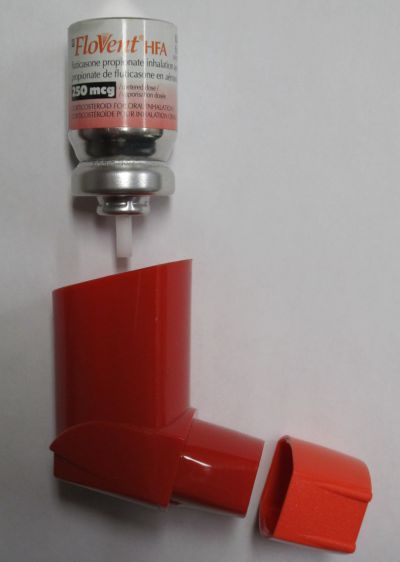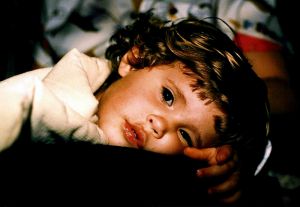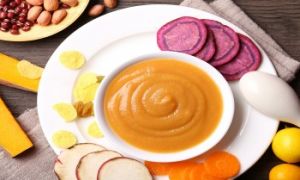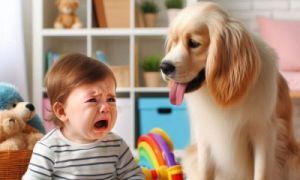Understanding what triggers your child's asthma can take time. Asthma triggers may not be the same for each child and children often have more than one trigger. You may not always be able to avoid your child's asthma triggers but knowing what they are may assist you in taking steps to manage them.
Colds and Flu
Common childhood respiratory viruses are the most common trigger for an acute asthma attack. As young children may experience between 6 - 10 respiratory viral infections every year, they are a very difficult trigger to avoid.
What you can do
- Always be prepared by ensuring that your child has an updated asthma action plan for you to follow at the first sign of a runny nose or cold. If you don't have an asthma action plan ask your child's doctor for one.
- Anyone with cold or flu symptoms are encouraged to cover their nose and mouth when coughing or sneezing, use tissues and dispose afterwards, wash their hands in soap and water thoroughly afterwards.
- Current Australian Immunisation guidelines suggest a flu vaccination for children over 6 months of age who may be at risk of developing severe complications eg. children diagnosed with asthma, especially those identified as having persistent or severe asthma.
Air Environment
Changes in weather, for example going from low humidity to high humidity, changes in air temperature, and windy conditions can be a trigger for a child with asthma. Poor air quality (air pollution) can also be trigger. Often asthma may get worse during a change of season.
What you can do
- Be aware of any predicted changes to the weather forecast.
- Monitor the air quality index (AQI) through your local weather forecasts, by accessing the following website www.environment.nsw.gov.au or by ringing 131 555.
- The lower the index value the better the air quality. See AQI table below. If levels are high or there are changes in temperature especially during thunderstorms, and this is a trigger for your child, it is recommended they remain indoors with windows and doors closed.
There is currently lack of evidenced based research to support the use of humidifiers for children with asthma as being beneficial.
Inhaled Allergens
Everyday substances in the environment that cause an allergic reaction in some susceptible people are referred to as allergens. When inhaled (breathed in), these allergens can trigger asthma symptoms in a vast majority of children with asthma. Inhaled allergens include dust and dust mites, moulds, animal hair and dander (cat & dog), & pollens.
Not all children react to the same allergens, so it is important to identify the ones that may cause a reaction and avoid or reduce exposure to them. Your child's doctor can arrange a simple skin prick test to detect if your child has any allergies.
What you can do
Dust mites
- Use a dust mite resistant cover, for mattresses, pillows and quilts (available from pharmacies). These should be washed every 2 months along with soft toys and furnishings. Feather bedding is preferable to sheepskin or woollen underlays.
- Shake and air pillows and quilts in the sun weekly and wash sheets and pillowcases weekly. Washing at usual water temperature will remove more than 95% of allergens but this does not kill the dust mites so regular washing is required.
- Vacuum carpets and soft furnishings weekly. The child should avoid re-entering the room for approximately 20 minutes after the vacuuming. If possible, reduce clutter from the bed and bedroom by removing soft toys and soft furnishings.
Dust
Wipe hard surfaces, including hard floors, with a damp or electrostatic cloth weekly rather than dusting, sweeping, or vacuuming.
Mould
- Reduce humidity by having a dry, well-ventilated house with adequate natural insulation. Dehumidifiers have not been shown to be of any benefit in controlling asthma.
- Remove visible mould, clean refrigerator drip trays regularly, keep air conditioning units clean, remove indoor plants, and avoid working with garden compost and mulch.
- On cold days try to keep the inside temperature at least 5°C higher than the outside temperature and provide continuous low level dry heat. Continuous, even heating will allow warmth to penetrate walls and ceilings.
Cats, dogs and other pets
Where possible keep pets out of the house, or if not possible, keep them out of the bedroom and living areas. Where possible, wash pets and vacuum carpets weekly.
Pollens
Find out which grasses and plants in your area have wind-borne pollens and where possible try to avoid them. Encourage your child to remain indoors during windy, high pollen count days and after thunderstorms. Also avoid outdoor activities where there is high exposure to pollen e.g. mowing of lawn.
Emotions
Anxiety, stress, distress and laughing can be asthma triggers.
What can you do
Provide reassurance and relaxation for your child.
Exercise and Play
Exercise is a common asthma trigger with symptoms occurring either during the exercise or some time after. This is known as exercise induced asthma. When exercising or playing, children breathe more quickly and often breathe through their mouth. This results in breathing air that remains cool and dry, causing a loss of moisture from the airways, and leading to the development of asthma symptoms. Exercise is important for normal growth and development and should be encouraged, but when it triggers asthma symptoms, can be a reason why children avoid it. Simple steps can be taken to manage exercise induced asthma. Ask your child's doctor if exercise becomes troublesome.
What you can do
- Begin exercise and play with warm-up exercises and finish with cool-down exercises. Administering the blue reliever medication 5 - 10 minutes prior to commencing exercise may be helpful. Speak with your child's doctor about this.
- It is recommended that your child avoid exercise or play outside when the level of air quality is high (see table on Air Environment section on this article) or if your child is unwell with cold or flu symptoms.
- If symptoms develop during exercise, it is important that your child stops the exercise and their blue reliever puffer is administered according to the child's asthma action plan. If the asthma action plan is unavailable commence the Standard Asthma First Aid Plan.
Some Foods and Additives
Food allergies are uncommon triggers for asthma. Food additives that may trigger asthma include metabisulfite/sulphur dioxide (220-228), tartrazine (synthetic yellow dye [102]), monosodium glutamate (621) and acetylsalicylic acid ([ASA]. Some of these additives may also occur naturally in some foods.
What you can do
As food allergies are uncommon, a healthy diet should be encouraged. Only avoid those foods your child is known to be allergic to. Seek a detailed assessment from an Allergy specialist.
Certain Medications / Herbal Remedies
The non-steroidal anti-inflammatory drugs such as Ibuprofen, Nurofen, and Aspirin may be potential asthma triggers. The natural remedies Echinacea, Royal Jelly, Willow Tree bark extracts, and Camomile may also be potential triggers.
What you can do
Avoid known medications that are a trigger. Speak to your child's doctor about these medications and remedies.
Environmental Tobacco Smoke
Tobacco smoke contains over 4,000 chemicals and the effects on your child's health can be very serious. When a person smokes near a child, it is exposed to passive smoking (breathing in smoke from other peoples' cigarettes). The smoke that the child breathes in is commonly known as Environmental Tobacco Smoke (ETS). There are two forms of Environmental Tobacco Smoke - main stream smoke is breathed out by a smoker and side stream smoke is from the burning end of a cigarette. The side stream smoke tends to remain in a room longer than mainstream smoke and also contains many cancer causing substances.
For children, exposure to ETS can result in:
- a higher risk of having asthma symptoms before the age of 5 years
- an increase in asthma attacks and an increase in the severity of those attacks
- respiratory infections such as bronchiolitis
- middle ear infections
- sudden infant death syndrome
What you can do
The most important thing you can do for the health of your child is to stop smoking.
Help is available for you from: NSW QUIT Line - 13 QUIT (13 7848) www.13quit.org.au A free, confidential telephone service designed to help smokers to quit smoking. Open 24 hours a day, 7 days a week for recorded information and to order a Quit Kit OR Talk with your doctor, paediatrician, specialist, asthma educator for further information on how to quit smoking and keeping car and home smoke free.
If you are a smoker and not ready to give up smoking and if your friends and family smoke around your child:
- Make your car and home smoke free:
- do not smoke in your car.
- ask people who smoke to go outside. Remember opening windows and doors will not protect your child from ETS.
- wear additional clothing then remove it after smoking and wash your hands before returning to your child.
- display signs and or stickers that your home and car is a smoke free zone.
- Avoid taking your child to smoky places.
- It is important that women do not smoke when pregnant or breastfeeding.
- Since 1st July 2009 smoking in a car with child under the age of 16 years incurs a $250 on the spot fine.
For more information on how to Quit Smoking: Tabacco - Free Life
References
Aussie Childcare Network acknowledges the co-operation of The Children’s Hospital at Westmead, Sydney Children’s Hospital and Kaleidoscope, Hunter Children’s Health Network in making this fact sheet available.
Disclaimer: This article is for education purposes only. Please consult with your doctor or other health professional to make sure this information is right for your child.







